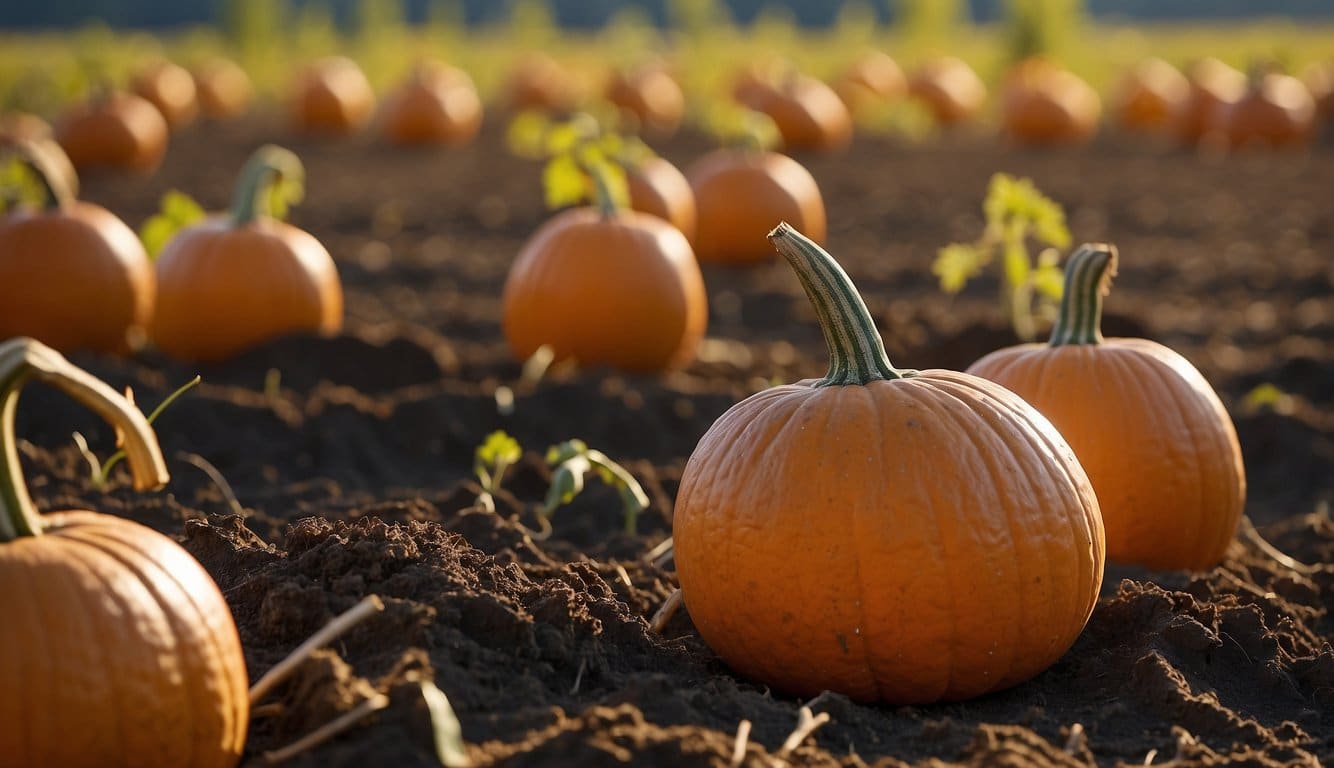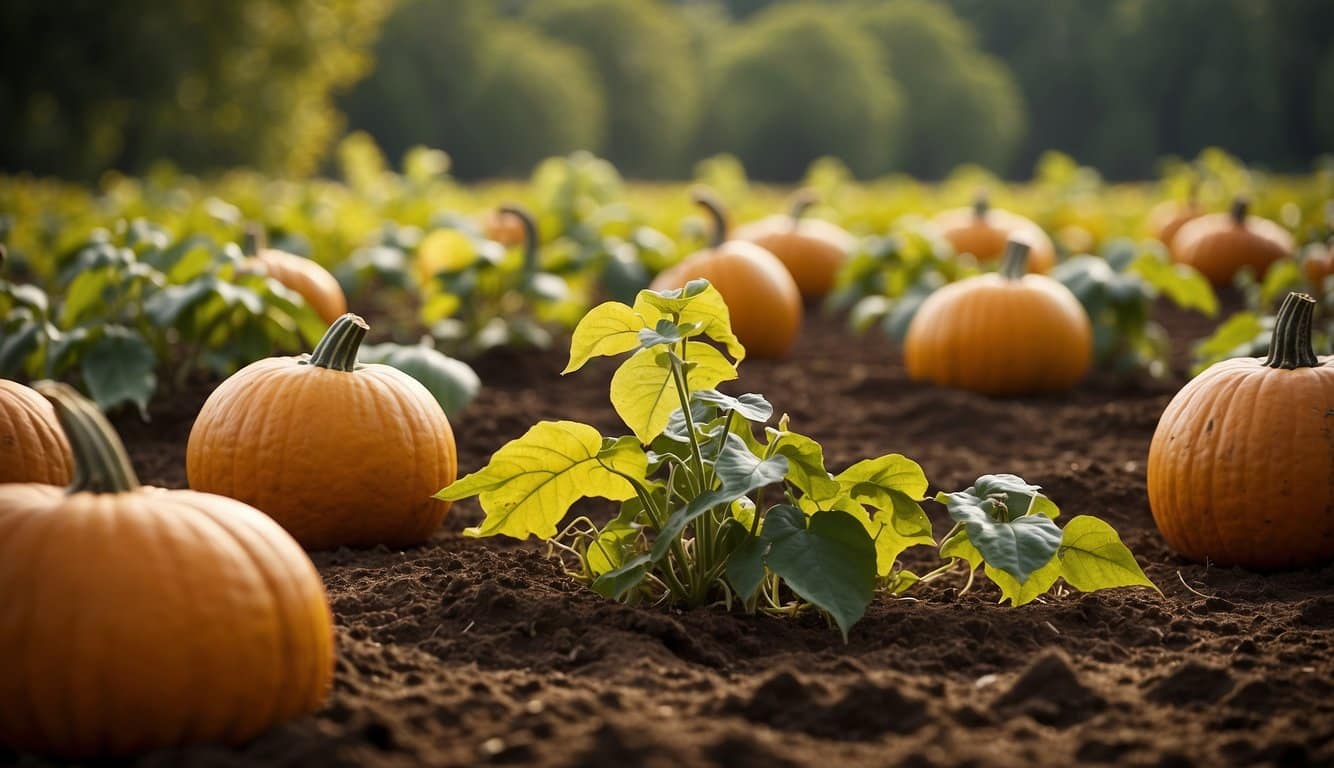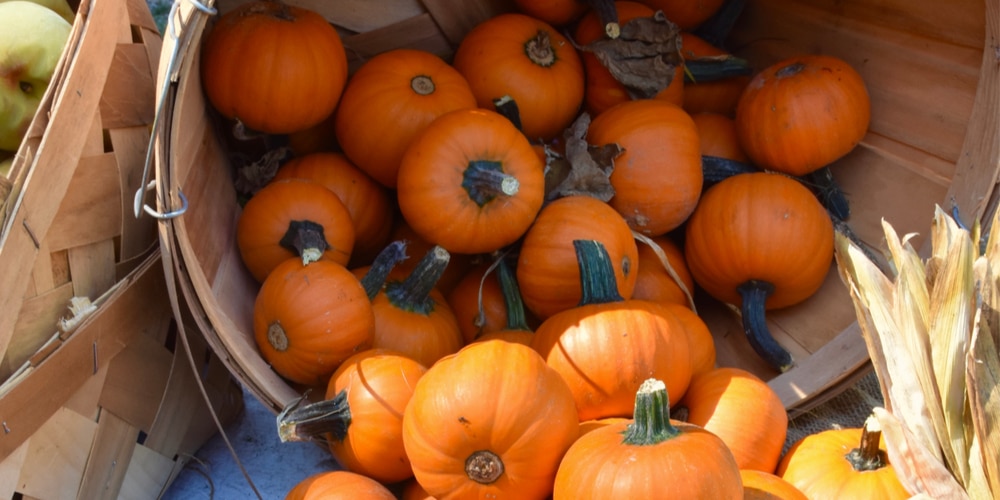Quick Answer
| Question | When to Plant Pumpkins in NC? |
|---|---|
| Answer | Late May to Early July |
| More Info | In North Carolina, timing is crucial for pumpkin planting to ensure they mature for fall festivities. Plant after the last spring frost to avoid cold damage. Pumpkins typically need 90-120 days to mature, so adjust planting based on the variety’s maturity time and your target harvest date, ideally in late September to October. Pumpkins prefer well-drained soil, full sun, and regular watering. In NC’s varying climate, coastal areas may plant slightly earlier, while mountain regions should wait until the warmer days of late spring or early summer. |
Begin: The Long Version

Planting pumpkins at the correct time in North Carolina is vital to ensure a healthy crop.
- Last Frost Date: Seedlings are sensitive to frost. They should be nurtured indoors until the threat has passed.
- Soil Temperature: Pumpkins require warm soil, ideally above 70°F, for successful germination.
Indoor Seeding:
Start pumpkin seeds indoors about 20 days before the last average frost date.
Outdoor Transplanting:
Transplant pumpkin seedlings to the garden after ensuring the soil temperature is sufficiently warm.
This is typically when the air temperature consistently stays above 60°F, which happens in mid-April to early May for most parts of North Carolina.
Germination Time:
Seeds typically sprout within 5 to 10 days in warm soil.
Harvest Time:
Aim to harvest pumpkins before the arrival of the first frost in fall to avoid damage to the fruit.
Soil Preparation:
Prior to planting, gardeners should ensure the soil is rich, well-drained, and has been amended with compost or other organic matter for optimal growth.
Understanding North Carolina’s Climate Zones
North Carolina’s varied climate zones significantly affect agricultural practices within the state, especially when it comes to planting pumpkins. The state is divided into three main climate zones: the Coastal Plain, the Piedmont, and the Mountain region.
Coastal Plain: This easternmost region experiences a subtropical climate, characterized by mild winters and hot, humid summers. The extended growing season here typically means earlier planting and longer harvest times for crops like pumpkins.
Piedmont: Situated between the Coastal Plain and the Mountain region, the Piedmont zone has a more moderate climate. While summers are still warm, the region generally experiences cooler temperatures than the Coastal Plain. Planting times may vary slightly from the coastal region due to later last frost dates.
Mountain: The highest elevation area in North Carolina, the Mountain region, has a significantly cooler climate.
Cooler temperatures and the risk of frost persist later into spring and arrive earlier in the fall. Gardeners in this region tend to plant pumpkins later than those in the Piedmont and Coastal Plain.
| Climate Zone | Last Frost Date | Recommended Planting Time |
|---|---|---|
| Coastal Plain | Early April | Late April to Early May |
| Piedmont | Mid-April | Early to Mid-May |
| Mountain | Late April | Late May to Early June |
Soil Preparation for Pumpkin Planting
Before planting pumpkins in North Carolina, gardeners must ensure their soil is optimally prepared. Pumpkins thrive in well-drained, fertile soil rich in organic matter.
Soil Composition:
Pumpkin plants are deep-rooted and require loose soil.
A combination of native soil, well-rotted compost, and other organic amendments enhances soil structure and fertility. For holes about one foot deep and 2 to 3 feet wide, mixing the removed topsoil with compost and soil amendments is advised.
pH Levels:
Pumpkin plants prosper in slightly acidic to neutral soil, with a pH range of 6.0 to 7.5 being ideal.
Testing the soil pH prior to planting allows for precise adjustments, if necessary, using lime to raise pH or sulfur to decrease it.
Nutrient Management:
Since pumpkins are heavy feeders, integrating a balanced fertilizer into the soil can promote healthy growth. The major nutrients required include nitrogen, phosphorus, and potassium.
| Nutrient | Purpose |
|---|---|
| Nitrogen | Leaf growth |
| Phosphorus | Root and flower development |
| Potassium | Overall plant health |
It’s essential to avoid over-fertilization, as an excess of nitrogen, particularly late in the growing season, can lead to lush foliage at the expense of fruit production.
Watering Considerations:
While preparing the soil, ensure that the site has proper drainage to prevent waterlogging, which can lead to root rot.
Pumpkins need consistent moisture, particularly during fruit set and growth. Building raised beds can improve drainage and warm soil faster in the spring, offering an earlier start for pumpkin seeds.
Pumpkin Variety Selection
When gardeners in North Carolina are choosing pumpkin varieties to plant, they should first consider the intended use of their pumpkins.
For carving, larger varieties like ‘Howden’ and ‘Autumn Gold’ are ideal due to their size and shape. For baking, smaller and sweeter varieties such as ‘Sugar Pie’ and ‘Baby Pam’ are often preferred.
Climate Adaptability
It is crucial to select pumpkin varieties that are well-suited to North Carolina’s climate.
Varieties that can tolerate the variable weather will stand a better chance of thriving and producing a good yield. Some varieties, like the resilient ‘Appalachian Pumpkin’, are developed specifically to perform better in the regional conditions.
Maturity Time
Gardeners should be mindful of the days to maturity for each variety:
- Standard Size: Between 100-120 days (e.g., ‘Jack O’ Lantern’)
- Small Size: Around 85-95 days (e.g., ‘Jack Be Little’)
- Large Size: Often more than 120 days (e.g., ‘Atlantic Giant’)
This knowledge helps plan planting dates to ensure that the pumpkins are ready for harvest by fall celebrations.
Disease Resistance
Choosing pumpkin varieties with resistance to common diseases like powdery mildew and downy mildew is beneficial for reducing crop loss due to these issues.
Aesthetic and Diversity
For those looking to add variety to their patch, there’s a range of colors and shapes available in pumpkins, from ghostly white (‘Lumina’) to the striking blue (‘Jarrahdale’), which also provides added interest for local markets if selling the produce.
Pumpkin Varieties for North Carolina
| Variety Name | Type | Days to Maturity | Disease Resistance | Best For |
|---|---|---|---|---|
| ‘Howden’ | Carving | 115 | Moderate | Halloween Decor |
| ‘Sugar Pie’ | Baking | 100 | High | Pies |
| ‘Appalachian’ | All-purpose | 105 | High | Adaptability |
| ‘Atlantic Giant’ | Giant Pumpkins | 130+ | Low | Competitions |
| ‘Baby Pam’ | Baking | 95 | Moderate | Small Batches |
Planting Techniques and Maintenance
When planting pumpkins in North Carolina, gardeners should consider both the timing and the techniques used to ensure a plentiful harvest.
Choosing the Right Spot: Pumpkins require full sun and should be planted in an area that gets at least 6-8 hours of sunlight daily.
They thrive in well-drained, fertile soil with a pH between 6.0 and 6.8.
Soil Preparation: Before planting, work generous amounts of compost or aged manure into the planting site to improve soil fertility and structure.
Optimal soil temperature for pumpkin seed germination is at least 60°F (15.5°C).
| Stage | Actions |
|---|---|
| Pre-Planting | Test soil pH, enhance with compost, ensure proper drainage |
| Planting Seeds or Seedlings | Sow seeds 1 inch deep, spaced 2-3 feet apart |
| Post-Germination | Thin seedlings to the strongest per mound |
Watering: Pumpkins have deep roots and require regular watering, especially during dry spells.
Aim for 1 inch of water per week, either through rainfall or irrigation.
Take care to water the plants at the base to avoid wetting the leaves, which can lead to disease.
Fertilization: Fertilize pumpkin plants with a high-phosphorus blend to promote good root and fruit development.
Apply as directed, typically at planting and as fruits begin to form.
Pest Management: Keep an eye for common pests such as cucumber beetles and squash bugs.
Use floating row covers to protect young plants and avoid insecticides that harm pollinators vital for fruit set.
Training Vines: As pumpkins grow, consider training the vines to optimize space and exposure to sunlight.
Gently guide them in the desired direction, being cautious not to harm the stems.
Frequently Asked Questions
In North Carolina, the key to successful pumpkin growing is knowing the right time for planting, the conditions they thrive in, and the care they require.
What is the optimal time for planting pumpkins to ensure maturity by Halloween?
To ensure pumpkins are ready by Halloween, one should plant seeds in North Carolina from late May to early July.
This timing accounts for the approximately 100-day growth period pumpkins require.
How long is the growth period for pumpkins from planting to harvest?
Pumpkins typically take between 90 to 120 days from planting to reach harvest. Timing can be influenced by the pumpkin variety and local growing conditions.
What are the planting recommendations for pumpkin seeds in Zone 7?
For Zone 7 in North Carolina, gardeners should plant pumpkin seeds after the last expected frost.
They should also wait until the soil temperature reaches at least 70 degrees Fahrenheit, usually around late April to May.
Is it necessary for pumpkins to grow under full sun conditions?
Pumpkins need full sunlight for most of the day.
They thrive when they receive at least 6 to 8 hours of direct sun, which encourages healthy growth and maximizes yield.
Can you directly sow pumpkin seeds harvested from a pumpkin?
One can directly sow seeds harvested from a pumpkin, but for best results, they should be cleaned, cured, and stored properly before planting.
Hybrid pumpkin seeds might not produce identical offspring.
What is the maximum number of pumpkins expected per plant?
The number of pumpkins per plant varies with the variety.
Small varieties may yield 4 to 8 fruits per vine, while larger types might only produce 1 to 2 pumpkins per plant under optimal conditions.
Last update on 2025-06-06 / Affiliate links / Images from Amazon Product Advertising API




